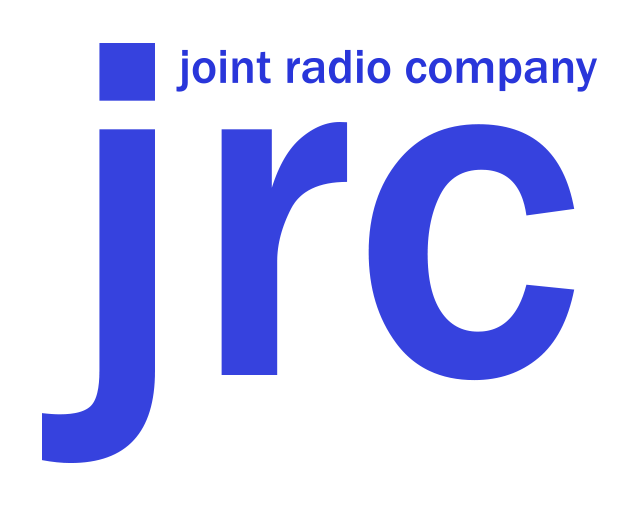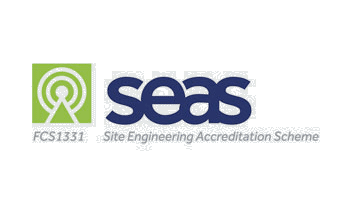
spectrum management, radio and telecommunications services
History of The JRC
History of The JRC The Need for Enhanced Operational Control of Energy Networks - The Formation of the "Joint Radio Committee of the Nationalised Fuel and Power Industries"
Private radio systems were first employed within the utilities in 1947, initially by the electricity industry, in the form of Private Mobile Radio (PMR) systems, and later by the gas and water industries. Most PMR systems at this time operated in the Low VHF Band but some were in the High VHF Band. The systems used 100 kHz channel spacing and were licensed and operated under heavy regulatory restrictions.
In the light of the above, and the then General Post Office's (GPO) Postmaster-General's Mobile Radio Committee's proposals to establish an unworkable shared power industry allocation with fewer channels than were being used at that time, the power industries responded by forming the Joint Radio Committee for the Nationalised Fuel and Power Industries (JRC) in 1955. Management of the utility radio spectrum was moved away from the GPO and into the JRC.
The Work and Achievements of the JRC
In the late 1950s and early 1960s, the JRC co-ordinated both the development of transistorised transportable PMR units and the exploitation of the High VHF Band; the latter was achieved by sponsoring tests to show that the High VHF Band was equal in performance to the Low VHF Band.
Leading from this the JRC was instrumental in enabling its members to self provide their own point-to-point fixed services by means of microwave links during the 1960s and 1970s. Self-provided microwave networks have been extensively used by both the electricity and gas industries. 1987 saw the JRC sponsoring trials of PMR using Transparent Tone In Band (TTIB) on Single Sideband (SSB) equipment with the University of Bristol, which eventually developed into Linear Modulation (LM) technology.
More recently JRC has developed the capability to design Next Generation Wireless networks based on Long Term Evolution technical to support the introduction of enhanced operational control networks to facilitate ‘Smart Grid’ functionality.
JRC Spectrum Management
In 1955 the JRC recommended a radical solution to the Postmaster-General in that both the Low and High VHF Bands should adopt a 25 kHz channel spacing, this led to the development of a GPO specification and an increase from 11 to 22 channels for the fuel and power industries.
In 1969, the JRC had to co-ordinate the move out of the Low and High VHF Bands into the "temporary" Middle VHF Band allocation. This was subsequently affected by decisions at the World Administrative Radio Conference 1979 (WARC-79) at which it was decided that Middle VHF Band PMR services were to be relocated to make room for additional broadcasting services. The JRC subsequently co-ordinated the move into the newly negotiated "JRC Band" (140/148 MHz) in the late 1980s and early 1990s. A regular cellular frequency re-use strategy was employed to meet traffic growth and MPT1327 systems were deployed to provide the infrastructure.
In 1986, the JRC in partnership with the water industries' Telecommunications Advisory Group (TAG) and the Radiocommunications Division of the DTI, produced a revised version of MPT 1411, the specification for telemetry and telecontrol services, with a 12 kHz channel spacing. The band plan was further revised in 1988 with the adoption of a cellular frequency re-use strategy to support growth. This also permitted both the JRC and TAG to self manage their own channels. The specification was further revised and enhanced in 1993 to give greater flexibility and improved assignment techniques, again through a partnership with the Telecommunications Advisory Committee of the Water Industries (TAC) and the then Radiocommunications Agency (now part of Ofcom). In 2004 JRC managed the Fuel and Power telemetry and telecontrol spectrum and issued licences under contract with Ofcom. On behalf of its Members, JRC has since purchased a national licence for the Fuel and Power Telemetry band, taking full responsibility for the band.
In 1993, the JRC, in partnership with TAC, successfully negotiated spectrum within Band III for Automatic Meter Reading applications (184 MHz).
By the early 1990s, the JRC was managing 4.025 MHz of spectrum, of which 2.825 MHz was for PMR applications and 1.2 MHz for scanning telemetry and telecontrol services.
The Joint Radio Committee for the Fuel and Power Industries
After the privatisation of the former gas boards and the British Gas Corporation into British Gas plc in 1988, the JRC changed its name to reflect that it no longer just represented nationalised utilities. By 1990, the electricity industry had been privatised and British Coal followed in 1994.
JRC Membership
The JRC comprised of 29 organisations at the time it was formed; the 14 electricity boards, the Central Electricity Generating Board (CEGB), the 12 gas boards, the Gas Council and British Coal.
After the privatisation of the electricity industry, the membership increased to 35 organisations as a consequence of the CEGB being split into three separate companies; PowerGen, National Power and the National Grid Company, with its nuclear power stations remaining under state control. The two Scottish nuclear generating stations were separated from the South of Scotland Electricity Board at the time of its privatisation into Scottish Power. The nuclear stations were later re-grouped and the Advanced Gas Cooled stations were privatised and became Scottish Nuclear and Nuclear Electric, these two companies are now a part of British Energy. The older Magnox stations remained Government owned in the form of Magnox Electric.
The Formation of the Joint Radio Company Ltd.
As a consequence of need for JRC to effectively operate in a new privatised utility industry environment, and the need to prepare for the possible introduction of Spectrum Management Organisations, the JRC decided to establish itself as a non-profit enterprise. The Joint Radio Company Ltd (JRC) was established in 1994 as a joint venture between the electricity and gas industries in order to manage their allocation of radio spectrum, thus ensuring that its members continue to have access to the vital communications facilities required by both industries.
The JRC's shareholders are the Gas side of National Grid, previously Transco - a company resulting from the demerger of British Gas (which was the consolidation of the former gas boards and the British Gas Corporation (formerly the Gas Council) upon the privatisation of the gas industry), which then merged with National Grid; and the Energy Networks Association which holds the share on behalf of electricity utilities. There are currently circa 25 members of the JRC including all of the electricity transmission & distribution companies in the UK, the majority of the gas transmission & distribution companies, Network Rail and Transport for London, in addition to ESBN in the Republic of Ireland.
The Joint Radio Company Today
As the services provided by the energy utilities are central to the welfare and economic success of society they have been acknowledged as part of UK Critical National Infrastructure. Maintenance of critical infrastructure services have significant safety implications in that disruption of high power electrical cables is a major safety hazard and may have profound complications in loss of service to vital organisations such as hospitals. Furthermore, gas escapes are likewise extremely dangerous and require a rapid response, both circumstances are addressed by the industry’s critical operational telecommunications networks that depend on the spectrum planned and co-ordinated by JRC.
The JRC holds the licenses for and manages the traditional block allocations of spectrum for the energy network operators in order that this critical national infrastructure is operated safely and efficiently.
Radio services for the utilities can be broadly broken down into four broad categories:
- Mobile Services - originally for vehicles on the move and personnel on large sites, the capabilities of existing utility analogue MPT1327 and Tier 3 DMR digital trunked networks are now extending beyond supporting simple voice and data communications. Common applications found on these networks include Asset Tracking, SCADA, Protection and Distribution Automation (Smart Grid) systems. The returns of using an established and resilient voice network with good coverage over your company's business area for data services can be extremely attractive. JRC is also responsible for co-ordinating access to emergency radiocommunications networks on behalf of the Energy Industries.
- Telemetry Links to provide remote monitoring, status and condition of networks together with remote switching to reconfigure or control networks as required from central control units.
- Radio Fixed Links used as part of the infrastructure either to link elements of the mobile radio network or scanning telemetry systems, or to provide trunk telecommunications to move data around the network. Application for such links may be made directly to the regulatory authority, but utilities have the option of route such applications through JRC where this is more convenient or they wish to avail themselves of JRC technical resource. Most of our Membership now licence their links through JRC, who is the licence holder and responsible for first-line interference resolution and coordination with wind energy developments.
- Consultancy Services are becoming increasingly important to our Members’ as they are seeking solutions to enhance the performance of their existing analogue networks whilst also seeking to understand how modern wideband based networks might support the future operational needs of a ‘Smart Grid.’ In addition, JRC will also take on external work. JRC is also the Energy Industry's clearing house for Wind Farm planning applications and co-ordination with telemetry and other radio services, holding detailed data on Scanning Telemetry and increasingly, utility fixed links as members take up the service.
By JRC managing the radio spectrum on a co-operative basis, utilities have access to radio spectrum which might not be the case for them individually. It enables them to present a combined view to regulators and governments both in the UK and overseas in order to protect their investment and the security of their networks. With increasing globalisation of telecommunications, it also provides a more powerful voice in negotiations with manufacturers than an individual utility could exert by itself.


